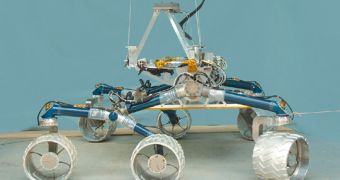The Mars Science Laboratory, a small SUV-sized rover that is supposed to be the most advanced device to perform science experiments on the red planet's surface, has been delayed for two more years. The rover is already way over its initial budget, and the current delay will add even more to the mission cost (about $400 million), with a total cost estimated at $2.2 billion. Earth-Mars alignment and some technical issues led to this delay.
Initially, the MSL should have been launched by October next year, but a "backlog of unresolved work" pushed the launch date to 2011, according to a statement by NASA administrator Mike Griffin. The overspending and delay have been largely criticized, but the challenges posed by the device's actuators, and by the gears for moving its wheels, robotic arm bending, and drill driving are nothing compared to the problems and budgets of past science devices like the Hubble Telescope and COBE satellite.
"Some of the things NASA has done of which we in the nation and indeed the world are most proud are things where we had far more troubles than we're having on Mars Science Lab," explained Griffin, cited by New Scientist. "There will be impacts. Science will be delayed," shared Ed Weiler, associate administrator for NASA's Science Mission Directorate, referring to the fact that additional funds for the MSL may be drawn from another, yet undisclosed, NASA Mars mission. "We'll probably have to delay a major planetary mission to come up with the cost."
The Earth aligns with Mars every 26 months, and rushing to resolve the current MSL problems in order to catch next year’s best alignment may "require us to assume too much risk – more than I think is appropriate for a flagship mission like Mars Science Laboratory," stated Griffin. This time frame will also allow for a promised collaboration between NASA and ESA for future Mars missions, such as ESA's ExoMars, which is set for 2016. The common goal of the two agencies is to bring back samples from Mars, a mission that would cost $6-8 billion. "We'll never ever do a sample return mission unless we work together," shared Weiler.

 14 DAY TRIAL //
14 DAY TRIAL //